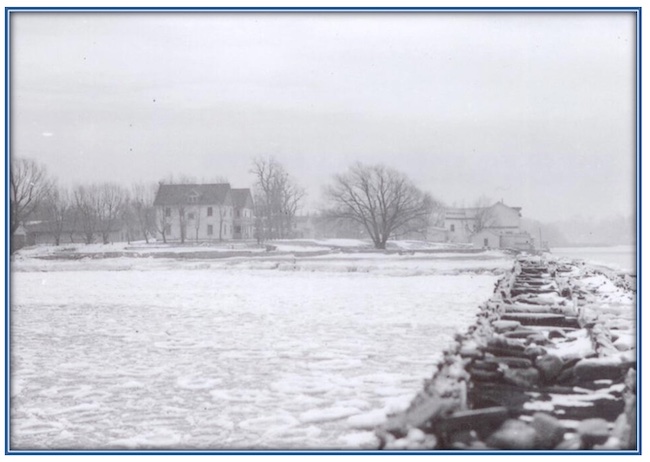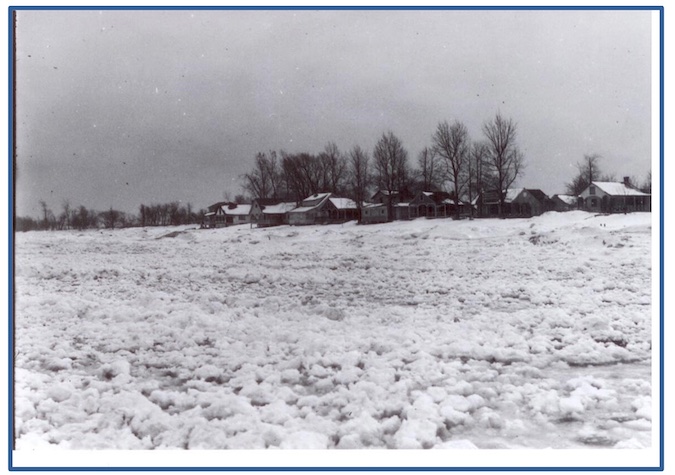100 years ago, Orleans County reeled from record-breaking cold
By Catherine Cooper, Orleans County Historian
“Illuminating Orleans” – Vol. 4, No. 8
CARLTON – At this time one hundred years ago, New Yorkers were reeling from the effects of a record-breaking cold spell.
Bitter cold, which lasted from Feb. 6-10, 1934, brought temperatures of -20 degrees to the region, 36 degrees below normal for the date. A temperature of -50 below was recorded in Arcade.
Remarkably, Lake Ontario, which rarely freezes over entirely because of its depth, froze that year.
In Buffalo, the axles of trolley street cars cracked and rendered them immobile, adding to the misery of freezing passengers. Many people suffered from frostbite and several cold-related deaths were recorded. In Orleans County, fruit trees were severely damaged, and many farmers lost their peach and apple orchards.

What brave soul ventured out on the disintegrating pier that once led to the lighthouse at Point Breeze to take this photograph?
We can all agree that recent winters have been milder. An Oral History interview conducted in 1997 by Lysbeth Hoffman, Town of Carlton Historian with Ed Archbald, a longtime Waterport resident, illustrates this change.
Mr. Archbald recalled harvesting ice from the Oak Orchard Creek. He built an icehouse on his property in 1919 and for many years placed about 40 tons of ice in it, sufficient to last through the summer.
The process began when the ice had formed to about 6 to 8 inches thick. Since ice is hard to cut through, a horse drawn ice plow would make the first grooves, about 3 inches deep. Workmen would mark off a block of ice and saw the markings with an ice saw. They would then hit the cuts and the block would break right off.
To get the ice to the icehouse, they built a slide and had a horse stationed near the creek and the icehouse. They set up a rope through the window of the icehouse down onto the creek. They would drop two chunks of ice on it and the horse would haul them up and they could then be dropped into the icehouse. Workers inside the icehouse positioned the ice chunks and placed sawdust around them for insulation.
Mr. Archbald observed that the creek no longer formed ice over three inches in depth. When asked what he thought was the reason for that, he replied:
“I suppose nature figured out we didn’t need it.”






































































